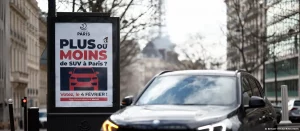C-Mine, creativity as a tool to transform a former Belgian mining area
Like the North-East in England and Zollverein, Essen in Germany, the Belgian former mining area of Winterslag/Genk is using creativity as a tool to transform the area in an innovative, sustainable and qualitative way and to generate new approaches to education, economic development, culture and tourism.
The initiative, which is called "C-Mine" (the “C” refers to creativity), includes:
Educational activities
The educational activities are centred around the media and design academy (site in Dutch only) which is now planning an experience design lab to integrate its various educational functions and increase their value for innovation and regional economic development [disclosure: I was born in the area and have an advisory role in the planning phase of the lab]. The educational mission of the academy and the site in general is aimed at innovative concept and product development. The academy will provide bachelor and master programmes as well as company training.
Creative economy
The design lab (see above) is also at the heart of C-Mine’s strategy for the development of a creative knowledge economy: to provide new input to creative and innovative project and product thinking, to be an incubator of new ideas for the local business community, to attract new design companies and stimulate a design approach within existing ones, to help spin off new companies, and to be a creative project space for entrepreneurial organisations.
Culture
A brand new culture centre will connect artistic creation and production to the development of a creative economy, with each providing added value to the other.
Tourism and recreation
C-mine will be developed as a meaningful experience site for all kinds of visitors, combining its historical mining heritage – including its impressive machine halls – with new creative and design activities.
The city has recently completed a comprehensive master plan. Many of the facilities will already be operational by 2007 and 2008. A more complete overhaul of the site will take place thereafter. The architectural studio 51N4E has been charged with the redesign of the existing buildings and the development of new infrastructure. The project is financed in part by the EU’s European Regional Development Fund.
This post was based on information provided to me by the City of Genk, currently only available in Dutch:
– press release (pdf, 68 kb, 2 pages)
– project brochure (pdf, 272 kb, 10 pages)





[…] As you might have understood from previous postings about the Ruhrgebiet and Zollverein itself the area (still) is a special place with a unique character. Once the Ruhrgebiet (and I guess there are similarities to other former industrial sites like the one in Belgium Mark Vanderbeeken has posted about) has been Germany’s industrial heartbeat based on coal mining and steel production right after the second world-war for a couple of decades. Accordingly the area was characterized by air and water pollution for a long time (which fortunately today is a thing of the past), mostly poor living conditions and dominated by up to 500.000 Polish immigrants from East Prussia and Silesia as as result from the “Ostflucht”. […]
[…] se condujeron y desarrollaron, en mi blog he destacado a algunos de ellos incluyendo la C-Mine belga, el alemán Zollverein y el DOTT07 británico, no podrÃa existir sin un lÃderazgo […]